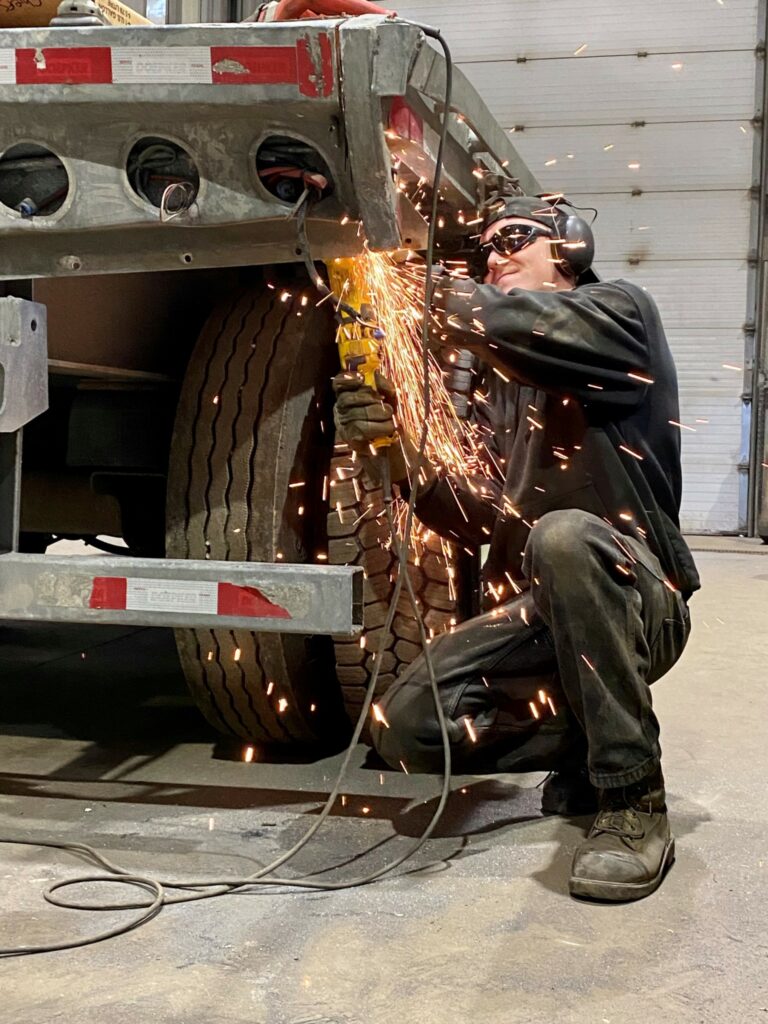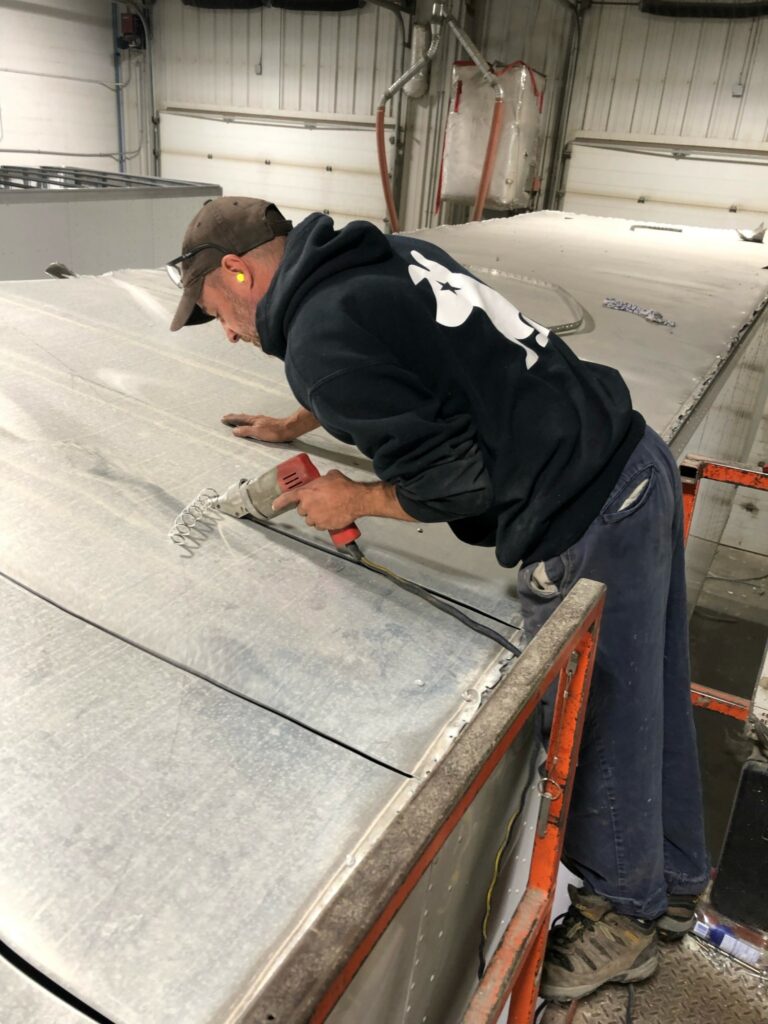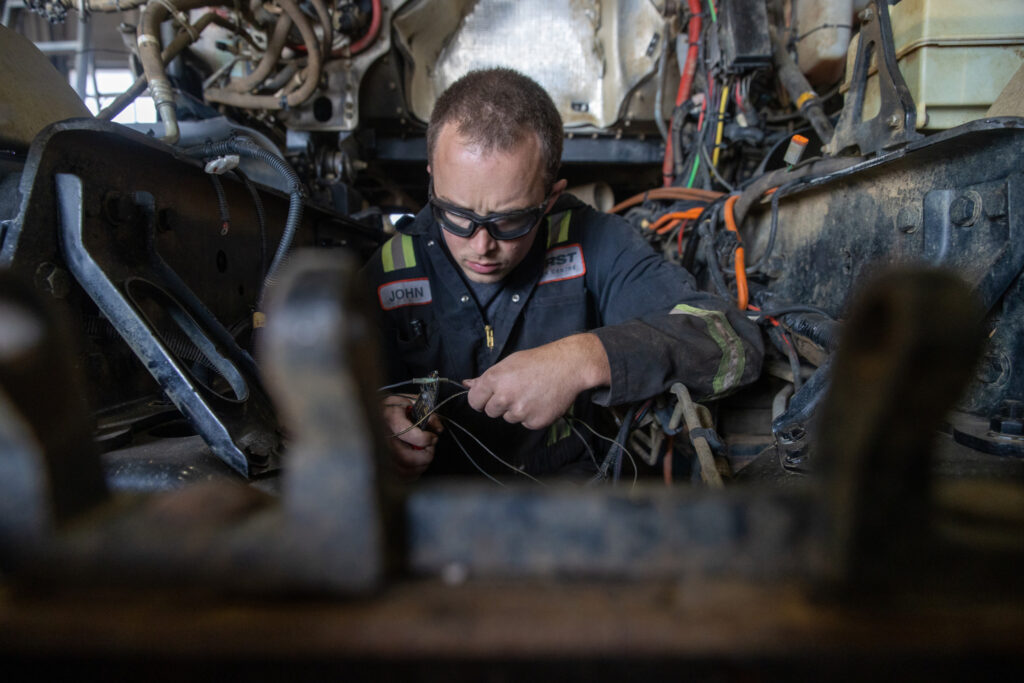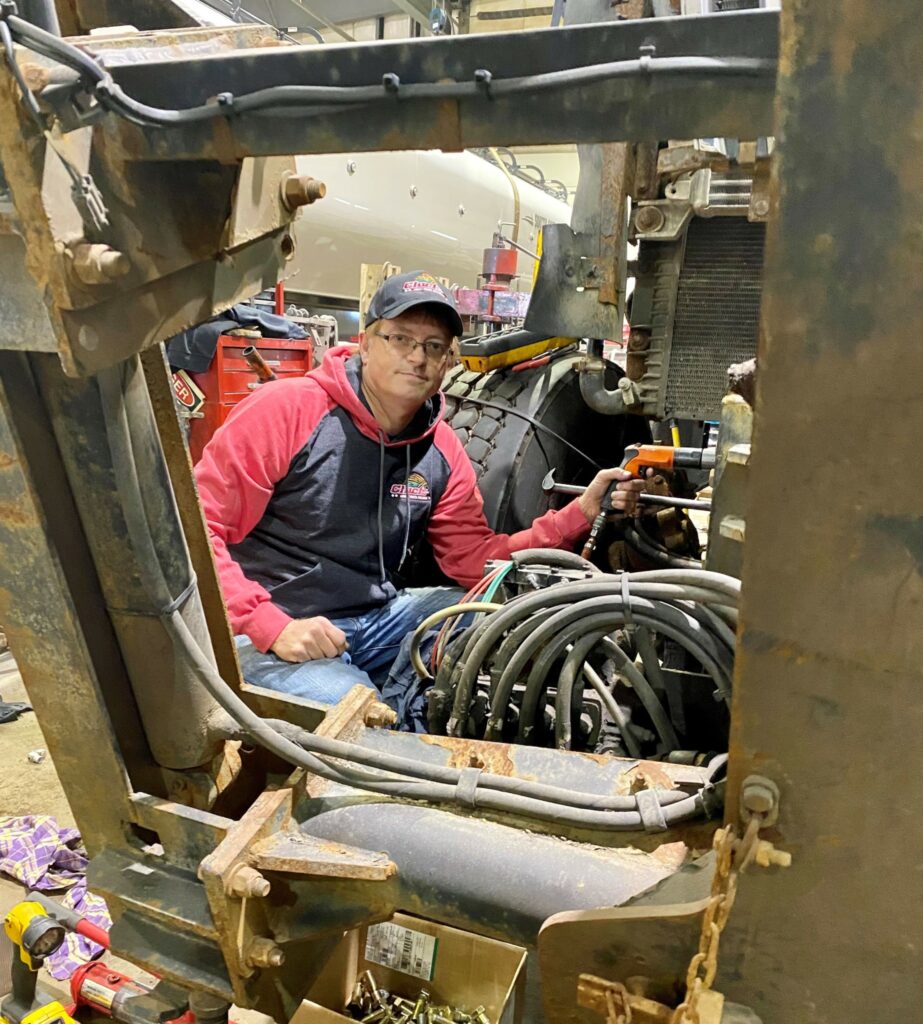Shops see rising demand for repairs amid supply chain challenges
When John DeGueldre began his career as a trailer mechanic in 1994, fleets would typically write off equipment whenever collision-related repairs were expected to last longer than 160 hours.
“Now it’s ‘Just fix it,’” says the trailer mechanic at Ocean Trailer in Winnipeg. The latest trailer he was assigned took 184 hours to repair. With a shop rate of $105 per hour, not accounting for the cost of the parts, the bills were adding up as well.

But these days, customers are looking to squeeze every possible mile out of their trailers – even when the work could take around 200 hours, he says.
New equipment is simply hard to come by, with limited spots available on order boards that are pushing delivery dates well into 2023 and beyond.
Ocean Trailer isn’t the only shop to experience the change. Chiefs Heavy Truck Collision in Kitchener, Ont., typically wrote off about two wrecks a month because customers didn’t think the repairs made financial sense. Now they’re being fixed because they simply can’t be replaced, says owner Kevin Moser.

The shortage of new and used trucks is forcing many customers to extend the use of their current assets, agrees Roman Tomica, COO for First Truck Centre – a business with full-service body shops at three of its 12 locations in Alberta and British Columbia.
“We are seeing increases in complete paint jobs to refresh aging units as well as other mechanical and cosmetic body repairs that otherwise would not have been performed.”
Supply chain challenges are not limited to new equipment alone. They’re also affecting the availability of all-important replacement parts.
First Truck Centre’s body shops perform 80 to 90 collision repairs during an average month, depending on the location and time of year, and they range from minor bumper and hood damage to major side layovers and jackknifes. About 25% of the work is major in nature, requiring several weeks to complete. But timelines of any sort can be thrown into disarray when parts are not available.
Challenges like that are focusing evermore attention on just how much work is required to make something roadworthy.
“All they want is just a couple more years out of the truck. There is a big decision there, whether to retire the truck or retire themselves or buy new,” says Brad Wiltsie, general manager of Wiltsie Truck Bodies in Aylmer, Ont., using his province’s safe, productive, infrastructure-friendly (SPIF) configurations as an example. A dump truck requiring a new lift axle with tires and SPIF kit costs about $25,000.

The soaring demand for repairs doesn’t necessarily mean higher profits for the shops, however.
“We are doing more work for less money because we are fixing stuff that we could replace easier,” Moser says.
When his team completed most of the repairs on a late-model truck that was damaged in a crash, the unit still sat in the shop for nine months because a cab door wasn’t available. The missing door also meant it couldn’t be parked outside and exposed to the elements.
Even though he paid for all the other parts to fix the truck, he couldn’t bill the insurance company until the job was complete, either.

“Anything I would have made from that job evaporated and more. We’ve run into that a lot this year,” he says.
First Truck Centre’s Tomica says he is seeing long lead times on everything from semiconductor-driven central processing units (needed to drive today’s technologically advanced vehicles), to DEF system components, and cab panels.
“We identified many commonly used collision repair parts and have pivoted away from traditional inventory procurement methods by pre-purchasing as many of these long lead time items ahead of time to minimize the impact to our customers,” he says.
“We have also increased the amount of loaner hoods and bumpers that we have on standby for customer use to get them on the road while their hood or bumper is being procured.”
And when needed parts are not available, the company needs to utilize its collective network of branches and other dealers to source what it can. When that falls short, it turns to OEMs to find alternative parts that will make do for now.
Wiltsie says his business has been lucky finding the parts, although they can admittedly come at higher price points when they do.
The combined pressures are even leading many shops to rethink the ways they do business, as they search for new efficiencies by bringing more work in house.
Wiltsie, for example, used to outsource laser cutting, but with time at a premium the business bought its own plasma table for fabrication work.
Chiefs Heavy Truck Collision’s Moser has also been fabricating new metal components where possible. The shop has been fixing old hoods so owners can have a spare, but even those are harder to come by due to parts shortages.
Have your say
This is a moderated forum. Comments will no longer be published unless they are accompanied by a first and last name and a verifiable email address. (Today's Trucking will not publish or share the email address.) Profane language and content deemed to be libelous, racist, or threatening in nature will not be published under any circumstances.